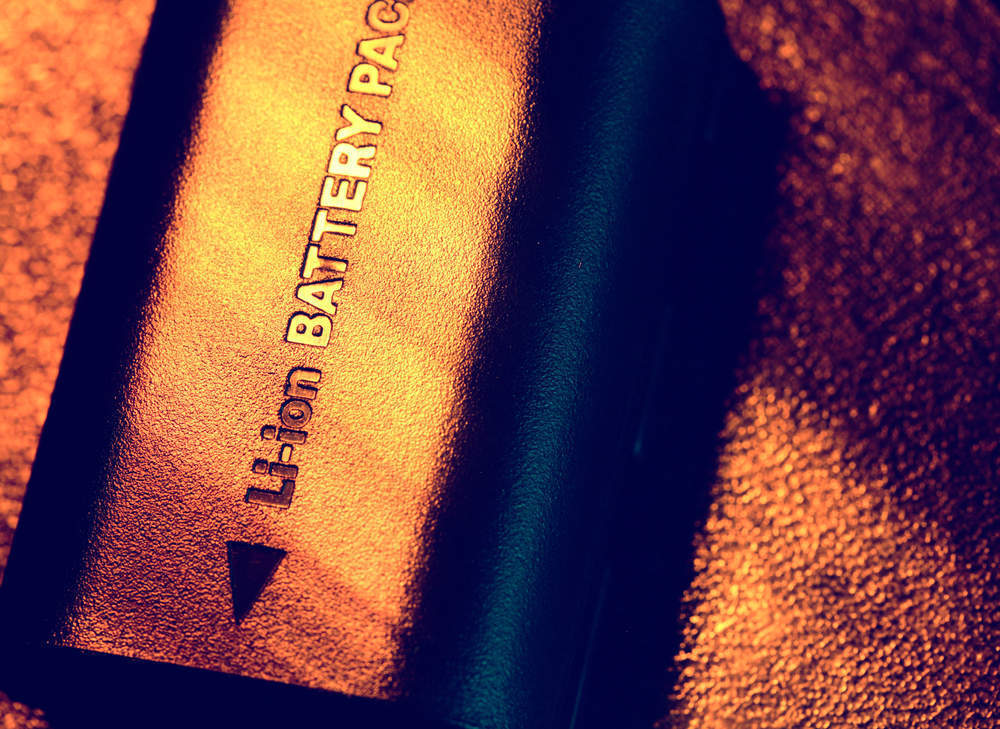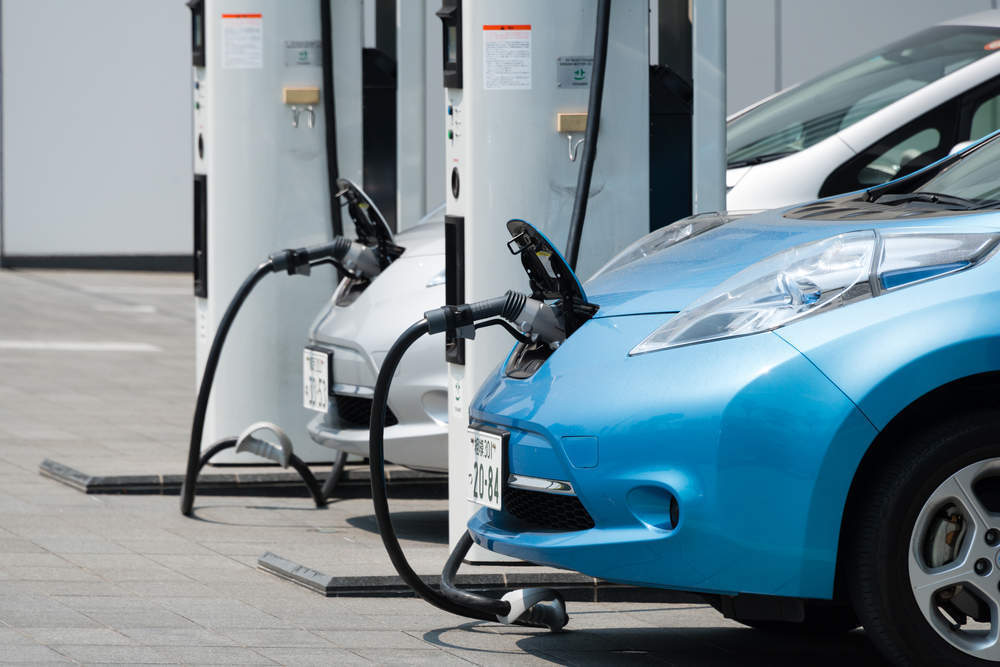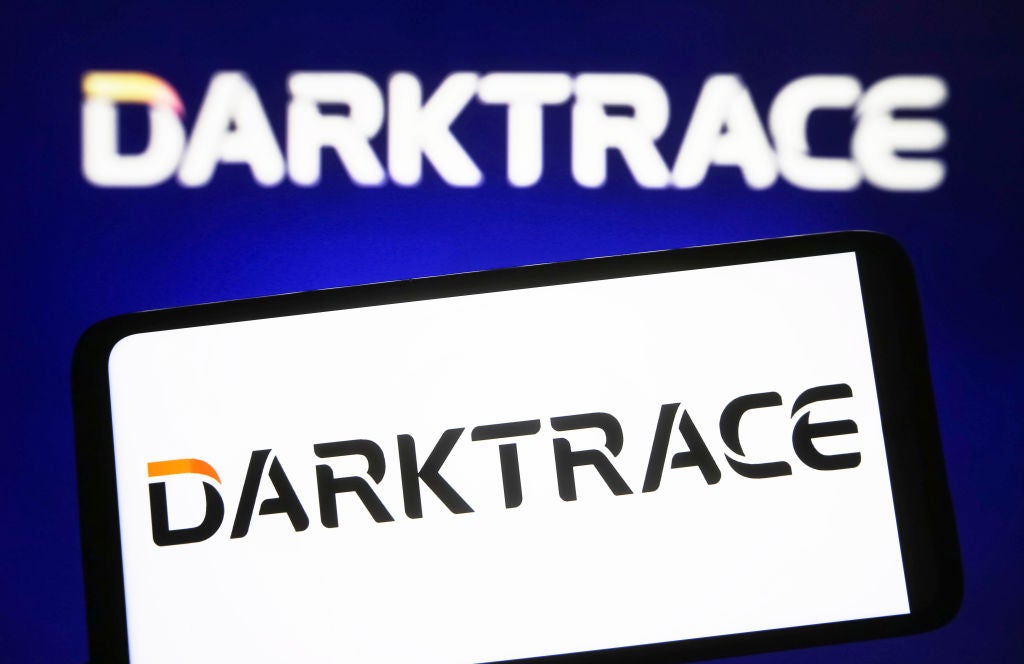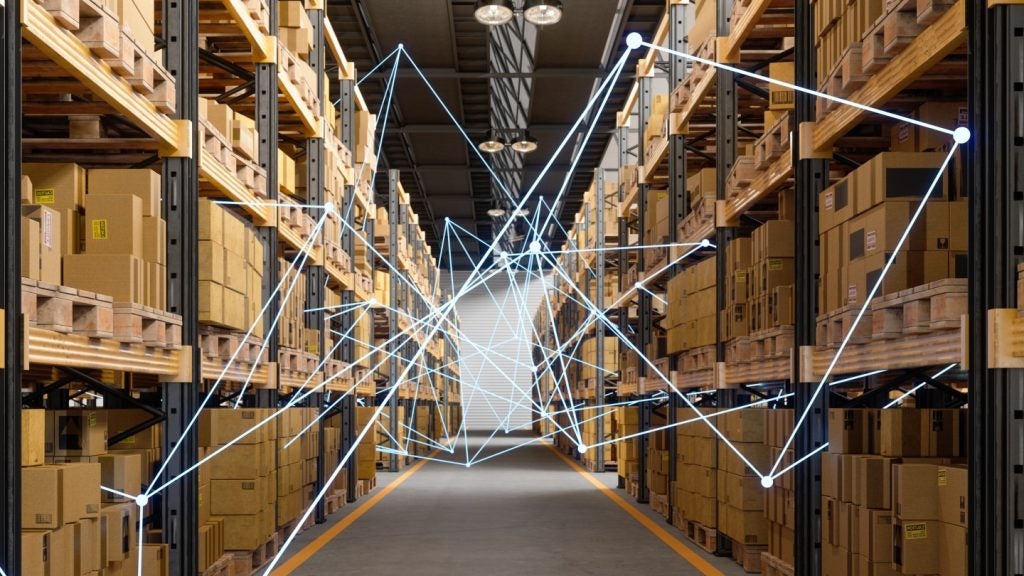
Lithium is one of the world’s fastest growing commodities — growing in value at around 18% every year, according to SQM, Chile’s largest lithium producer.
This is due to the persistent and increasing demand for lithium ion batteries to power a variety of electronic devices ranging from smartphones to laptops to electric vehicles.
Lithium-ion batteries make up 35% of total use of mined lithium worldwide, according to mining export website Mining.com.
Deutsche Bank has estimated this will increase to 70% by 2025.
Other applications for lithium are lubricant greases, glass, ceramic glazes and health products.
The most recent surge in demand for lithium ion batteries is linked to rise in interest in electric vehicles. Lithium ion batteries are vital for these types of devices because they are rechargeable.
How well do you really know your competitors?
Access the most comprehensive Company Profiles on the market, powered by GlobalData. Save hours of research. Gain competitive edge.

Thank you!
Your download email will arrive shortly
Not ready to buy yet? Download a free sample
We are confident about the unique quality of our Company Profiles. However, we want you to make the most beneficial decision for your business, so we offer a free sample that you can download by submitting the below form
By GlobalDataLithium ions move from the negative electrode to the positive electrode during discharge and move back when charged. The movement is possible because the electrodes are made from an intercalated lithium compound.
Smartphones contain between 2 grams to 5 grams of pure lithium while electric vehicles contain 10,000 times that.

They also produce more electricity per unit than conventional batteries. Mining.com estimates that a lithium battery’s output is almost twice alkaline batteries.
CEO of LithiumX, a lithium resource exploration and development company, Brian Paes-Braga told CNBC:
Consumer behaviour is going toward electric vehicles so the market is forced to come with them.
Head of Industrials and material research for Goldman Sachs Bob Koort has deemed lithium “the new gasoline”. He said:
[Lithium] is the key to understanding the mass market potential for electric vehicles.
Electric vehicle sales are growing partly due to government incentives and schemes to get older pouting cars off the road.
Tim McCutcheon, president of Wealth Minerals, a South American mineral resource company, told Verdict:
Governments want to reduce pollution in their cities and reduce their reliance on fossil fuels in cases where it has been imported.
Cities across the world, including Paris, Mexico City, and Athens, have said they plan to ban diesel vehicles from city centres by 2025.
Germany last week opened the door to ban diesel cars from city centres and plans to have six million electric vehicles on the road by 2030.
David Archer, Savannah Resources’ CEO, a multi-commodity development company with a lithium project in Northern Portugal, believes “this will only increase around the world”.
Archer told Verdict:
There are three important drivers behind the take up of electric vehicals. One, social imperatives — people are fed up of pollution and want to see the end of diesel vehicles, for example.
Two — the cost of ownership will soon match that of engine combustion vehicles.
And three — governments are moving against combustion vehicles.
However, the country driving demand for lithium batteries the most is China.
Peter Secker, CEO of Bacanora Minerals, a company engaged in the development and exploration of minerals in Mexico, told Verdict:
In 2017, they [the Chinese] sold over one million electric vehicles, this is expected to increase to two million in 2018. Compared to Tesla in the US who are producing between 200 and 300,000.
Savannah Resources’ Archer added:
In China there has been a move from engine combustion vehicles to electric vehicles.
This is because of the government’s desire to reduce levels of pollution and the government’s initiative to help develop the electric vehicles industry in China so that they can take the lead globally.
This is akin to what the Chinese have been able to achieve in the solar cells market. China now dominates the solar panels market.
Car manufacturers in Europe and the US are playing catch up to shift production particularly away from diesel.
Meanwhile, lithium prices have been rising dramatically in relation to demand. It’s estimated rising demand sent lithium prices from $3,000 per ton in 2006 to more than $6,000 in 2016 alone.
Although lithium is an abundant metal, many reserves do not contain sufficient amounts of lithium to be worth extracting for commercial use and some do not produce high grade enough lithium for use in batteries.
As a result lithium supply is struggling to keep up with demand.
Bacanora Minerals’ Secker said:
A challenge is making the product quality that battery makers want – not all lithium is suitable.
Sources of lithium
The two major reserves of lithium are hard rock and brines. The existing hard rock mines and brine salars have struggled to keep up with the surging demand for lithium.
Hard rock reserves are mineral ore sources of lithium, such as spodumene, petalite and lepidolite.
Lithium is extracted from these mineral ores through drilling deep holds into the mining area. Drill data is then analysed, and if high quality mineralisation is discovered then more drilling into the mineral ore occurs.
Salar brines are underground reservoirs which contain high concentrations of dissolved salts include lithium. They are often found under the surface of dried lakebed, which are called salars.
Brines are pumped to the surface of the salar and concentrated through evaporation in a succession of ponds. Each pond contains a higher concentration of lithium than the previous one.
After between nine and 12 months, a concentrate of 1% to 2% lithium is processed in a chemical plant to produce a range of end products, including lithium carbonate and lithium hydroxide.
This process removes unwanted by-products like boron and magnesium.
Current solutions to demand-supply disparity
In order to combat the growing disparity between supply and demand of the commodity, lithium mining and processing companies have come up with innovative solutions.
Lithium mining companies have sought to increase the amount of lithium they can sell to battery producers by either acquiring new resources or expanding their current mining and processing sites.
One of the big four in the lithium industry FMC signed a long-term supply agreement with Nemaska Lithium based in Quebec, Canada in November 2016.
The plan is for them to deliver 8,000 tons of lithium per year to FMC starting this year as well as build a commercial lithium plant with a production capacity of 28,000 MT of lithium carbonate.
Vice president and global business director of FMC Tom Schneberger said:
This agreement will further diversify our supply sources while fuelling our growing production of high quality, specialty lithium products.
We look forward to partnering with Nemaska on this important supply arrangement.
Kodal Minerals is developing a project in Southern Mali.
It acquired the hard rock the Bougouni project in 2016. It has worked quickly to advance the exploration and development of the project through drilling widely around the site.
High-quality battery grade lithium carbonate has been produced.
Bernard Aylward, CEO of Kodal Minerals, said:
“We are delighted to see that the Ngoualana prospect continues to return strongly mineralised intersections and is defining continuity of shallow, high grade lithium mineralisation that is important for the economic development of the Project.”
The next step for Kodal Minerals is a pilot extraction.
Aylward told Verdict:
“This will consist of 5000 tonnes of rock and will be shipped to China for processing.”
“We expect this to be completed in three months.”
Kodal Minerals will then seek a feasibility study with the aim of moving to full-scale production in the next few years.
Savannah Resources’ project in Northern Portugal is a hard rock mine in a similar early exploration phase as Kodal Minerals’ in Mali.
It is has mapped and defined the extent of lithium bearing pegmatites present at the project site. Drilling has been underway since July last year.
CEO Archer told Verdict it made a “major breakthrough” last week that increased the size of the overall resource to 10 million tons of 1% lithium.
Bacanora Minerals’ Sonora lithium brine project in Mexico completed its feasibility study stage in January.
Meanwhile, companies that operate in countries where the salt flats or rocks containing lithium deposits are publicly owned have sought to make agreements with the government to secure further access to lithium in those countries.
The Chilean government agency Corporation for Promoting Production in Chile (CORFO) announced in January 2018 that it had ended its dispute over royalties to Chile’s Salar de Atacama with lithium company SQM.
This deal allows SQM to increase its production quota amid a demand boom in return for the lithium company complying with global corporate governance standards. The deal will also permit SQM to work with state miner Codelco to begin developing the Maricunga lithium deposit.
This means SQM’s royalties have reached a similar level to that of Albemarle, one of its competitors on the lithium-rich salar.
Australian mining group European Metals signed a Memorandum of Understanding with the Czech government to develop a large lithium resource that is scattered under the fields around Cinovec, a village in the North of the country.
The Czech government are positive about the impact lithium extraction and processing could have on the country’s economy.
A spokesman for the Czech Ministry of Industry and Trade told the Financial Times:
A new lithium industry could gradually emerge in our country. We seem to have sufficient input stocks, an educated workforce, promising scientific capacities and a great tradition in the automotive industry, in addition to a unique strategic location in the heart of Europe.
It is thought that the entire value chain for the metal could create 5,500 jobs.
Managing director of European metals, Keith Coughlan, described the Cinovec project as “globally significant”.
This is due to the size of the project and the low cost of extracting lithium that puts it in Coughlan’s opinion “in the bottom half of the global cost curve for extracting the metal”.
European Metals is now seeking to complete a definitive feasibility study before seeking funding to build the mine and the plant.
Challenges facing lithium miners
The major challenge facing lithium as a commodity is meeting demand.
Bacanora Minerals’ Secker told Verdict “most commodities grow in value by 2% to 3% each year, but lithium is growing at 18% annually.”
A major issue is that mining and processing of lithium is a very slow process. No project, according to Mining.com, has been completed in under six years.
This means that it will be a few years before demand will dramatically increase. Mining.com estimates that if the all the current projects develop according to plan, global lithium supply will increase by approximately 6% to 8% per annum until 2020.
McCutcheon of Wealth Minerals told Verdict:
It is… clear that the pipeline of lithium projects in the world today is not very robust, meaning that there is only a vague understanding of how the lithium mining industry is going to meet medium term demand.
Scientists have begun to research methods to obtain lithium from a variety of new sources that could help to deal with continuing disparity between supply and demand.
Research carried out by Stanford University found lake sediments under super-volcanoes contain lithium-rich clay deposits.
Rainfall and hot springs leach out lithium from volcanoes. The lithium then accumulates along with sediments in a link and becomes concentrated in clay.
Co-author of the study and geological sciences professor at the Stanford School of Earth, Energy and Environmental Sciences Gail Mahood said:
If you have a lot of magma erupting, it doesn’t have to have as much lithium in it to produce something that is worthy of economic interest as we previously thought.
You don’t need extraordinarily high concentrations of lithium in the magma to form lithium deposits and reserves.
Researchers from the US and Australia discovered a method to effectively separate lithium from seawater and produce drinkable water.
They have created a metal-organic framework that catches lithium ions whilst purifying water. The technology mimics the ion selectivity of organic cell membranes.
This is a better technique than previous options to desalinate water since it does not require extra filtering to remove contaminants that overly porous membranes cannot catch.
Author of the study Huanting Wang of the Department of Chemical Engineering and Associate Dean of the Faculty of Engineering, Monash University, Australia, said:
Lithium ions are abundant in seawater, so this has implications for the mining industry who currently use inefficient chemical treatments to extract lithium from rocks and brines.
Global demand for lithium required for electronics and batteries is very high. These membranes offer the potential for a very effective way to extract lithium ions from seawater, a plentiful and easily accessible resource.
The concept of membrane separation to recover lithium from deposits was implemented by International Lithium at its brine project in Argentina.
However, recent studies and results have suggested that supply and demand may be beginning to even out.
In January 2018, stocks for the largest lithium producers, SQM, Abemarle and FMC Lithium, declined. SQM’s stocks dropped by 6.6%, Abemarle by 4.1% and FMC Lithium by 3%.
In late February 2018, Morgan Stanley analysts announced its forecast for lithium industry, predicting growth in electric cars will be “insufficient” to offset the rising supply of lithium.
New lithium projects were estimated by the analysts to be adding around 500,000 tonnes per year to the global supply of lithium by 2025.
They said that there will be “significant surpluses” from 2019 onwards.
Morgan Stanley‘s analysts also forecast the price of lithium carbonate will fall by 45% from $13,375 per tonne to $7,332 by 2021.
Verdict asked middle-sized, emerging lithium companies about Morgan Stanley’s predictions. They were all unconcerned.
Kodal Minerals’ Aylward said:
2025 is still eight years away. What we are seeing is the cost of batteries falling. This potentially leads to increased take up [of lithium-ion batteries].
Archer of Savannah Resources said:
I think Morgan Stanley has got it wrong. Price of lithium will decline but I think the mining industry is going to be pretty challenged to produce the required amount.
I think there will continue to be a very positive environment for producing lithium.
Another challenge facing the lithium industry is acquiring the necessary financing for its projects.
For its Cinovec project European Metals needs to raise around $400 million to cover the costs of building the mine and the plant preferably by the end of 2019.
Wealth Minerals’ McCutcheon told Verdict:
In the long run, there is enough lithium to supply global needs. However, getting there, and the mismatch between the capital allocated to consume lithium and the capital allocated to produce lithium, is still up in the air.
Secker of Bacanora Minerals said:
There are many projects at the exploration stage, but to move thorugh the feasibility stage you need financing from a range of sources, both debt and equity.
To finance its Mexican project, Secker told IG UK the company was looking for new shareholders in the US and Asia.
However, McCutcheon of Wealth Minerals is relatively optimistic about the availability of funding.
Major auto companies have gone on the public record saying they will be consumers of lithium by way of announcing a conversion of their automobile fleet to EV either partially or fully in the next 5 – 10 years. They are dedicating billions of dollars to building out the capacity to meet their announced corporate visions.
It is very odd for an auto-maker to buy into a raw material supplier, especially the fact that the same auto-makers [have] spent decades divesting of just about everything upstream of the supply chain.
McCutcheon gave the example of Toyota becoming an equity owner of Orocobre, an Australian mineral resource with extensive lithium mining operations in Argentina. Tesla are looking to secure a similar deal with SQM.
Opportunities for the lithium industry
Archer of Savannah Resources sees a “more towards renewable energy”.
Bacanora Minerals CEO Secker agreed and said:
It was portable devices, now it is electric vehicles and in the future it will be renewable energy.
In the future.. as the world moves towards zero emissions, battery storage will crucial to energy demands.
This is because lithium-ion batteries are “complimentary to solar and wind energy since they can be used to store energy in between generation and use”, according to Archer.
Kodal Minerals’ Aylward mentioned Telsa chief executive Elon Musks’ move to produce the world’s largest lithium-ion battery in South Australia as a solution to power outages.
This pushed South Korean Hyundai Electric and Energy Systems to compete by initiating a project to build a 150MW lithium ion battery to the power the city of Ulsan.
Archer also sees commercial vehicles as a promising area of future growth for the lithium industry, pointing to UPS electrifying its fleet of delivery trucks in the past few months.
I think buses, trucks and vans are particularly suited to battery power because they generally operate over shorter distances and return to a general depots where they can be recharged.
They usually operate in cities where there are more concerns about emissions.





